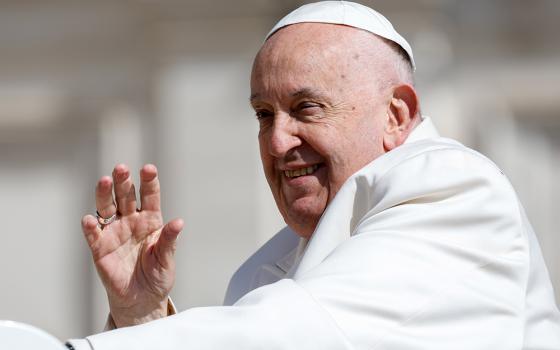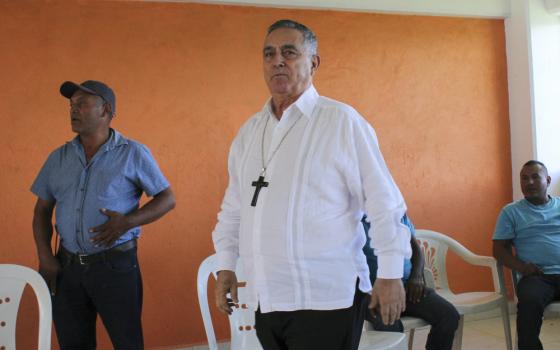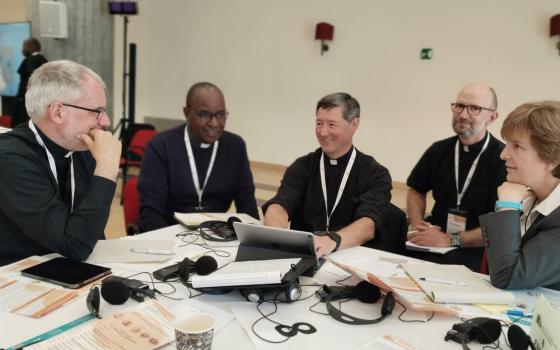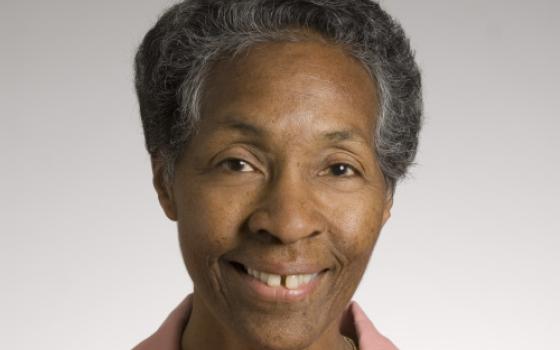"I want things messy and stirred up."
This statement by Pope Francis to youth on Copacabana beach last summer in Rio de Janeiro during World Youth Day will no doubt become one of the iconic quotes from this papacy, not only because it is a pithy sound bite, but also because -- we are learning -- it seriously represents Francis' modus operandi. He stirs things up and then waits to see what will rise out of the chaos.
Francis' delight in stirring things up is no more evident than in the preparation for the October's Synod of Bishops. Even before the Vatican officially announced an extraordinary Synod of Bishops on the new evangelization of the family, there were signs that this event would be different.
In the early weeks of his papacy, Francis had said he valued synods, the periodic meetings of the world's bishops, and that he wanted to make greater use of them. In June, he met with the Ordinary Council of the Synod of Bishops, the body that organizes synods, which typically happen every three or four years. At that meeting, Francis described synods as "one of the fruits of the Second Vatican Council" and a structure "at the service of the mission and communion of the church, as an expression of collegiality." It was at this June meeting that Francis first proposed that family life be the theme of the next synod.
Francis continued to develop his ideas about the synod through the summer. Before he addressed the youth on the Rio beach, Francis met bishops of Latin America and talked with them about the governance of the church, saying, "Central bureaucracy is not sufficient; there is also a need for increased collegiality and solidarity." And in a hint to the messiness that would ensue, he added that what is needed is "not unanimity, but true unity in the richness of diversity."
Talking to journalists on the plane back to Rome from Rio, when asked about his plans to reform the Curia, he talked about synods, saying he was looking at proposals to reform "the Secretariat of the Synod and its methodology" and perhaps give the post-synodal commission "a permanent consultative character."
In October, at the first official meeting of his council of eight cardinals, reform of the synod structure took center stage. Archbishop Lorenzo Baldisseri, newly appointed secretary general for the synod office, joined the pope and cardinals for their discussion. The Vatican press office downplayed expectations that their discussions would lead to major changes in the near future, but the cats were already out of the bag.
In mid-October, Baldisseri's office released a questionnaire on family life and related issues to the world's bishops with instructions to share it widely in parishes and deaneries. The public release of the 39-question survey pushed the consultative nature of the synod process to the grassroots, people-in-the-pews level. The story of how bishops responded or didn't respond to the sharing of the questionnaire in the United States and beyond has been described in nearly every issue of this newspaper since. One can quibble over what the instructions to the bishops actually asked them to do. For example, were bishops asked to question individual parishioners or just their pastors? And one can debate the efficacy of online surveys. But what remains clear and remarkable is that Catholics who knew about the survey and wanted to be part of the conversation could find ways to participate and could be part of the consultation process. That puts the preparation of this synod in new territory.
As reported in this issue, people who had the most opportunity to participate in the questionnaire responded with enthusiasm and gratitude. "People felt encouraged that their opinion mattered, and that they were being asked," one bishop told NCR. After years of simply being told what to think and how to act, people were being asked their opinions. That itself has made the questionnaire a success.
The bishops in this country approached the questionnaire in a variety of ways. Those who did their best to consult with the widest possible cross section of their dioceses and then tried even in limited ways to respond to or report back what they had heard deserve a good deal of praise. It's exciting to see bishops reaching out like this. Our hope is that it portends a return to the consultations the bishops conducted in the 1980s around their peace and economic pastoral letters. Those exercises created national conversations that brought the church together if "not in unanimity" at least in "unity in the richness of diversity." At a bare minimum, these exercises with the questionnaire can serve as conversation starters as the next round of synod preparation gets underway.
Questionnaires from all over the world are in the office of the synod. An instrumentum laboris, or working paper, is being drafted that will be returned to the bishops around the world to prepare them for the October synod. Our hope is that the bishops will also take this document to consultation, to gather another round of feedback. We are eager, too, to see what changes will come to the synod process itself. If the first round of preparation is any indication, we could be in for more creative messiness.
Our reading of the data
In the public reports of Catholics' responses to the 39 questions about family life from the Vatican's office preparing for the October synod on the family, much has been made of how Catholics have rejected church teaching.
In a forthright interview last month, Bishop Stephan Ackermann of Trier, Germany, said that the responses the German bishops had gathered from Catholics showed "quite clearly" that for the majority of the faithful the church's teaching on moral sexuality was "repressive" and "remote from life." (Read more of the interview.) The lessons Ackermann drew from the survey responses are hard reading. He said:
- Declaring a second marriage after a divorce a perpetual mortal sin, and under no circumstances allowing remarried divorced Catholics to receive the sacraments, is not helpful.
- It is no longer tenable to declare that every kind of cohabitation before marriage is a grievous sin.
- "The difference between natural and artificial birth control is somehow artificial. No one understands it, I fear."
These comments are echoed throughout all the survey results we have been able to sample. We think it is important to bring up two points: First, the majority of responses that have been reported publicly are coming only from the Western world. One of the few exceptions is the report from the Japanese bishops, which actually closely matched what we are hearing from North America and Europe. We have yet to hear from the developing world, where Catholicism is growing, and which we suspect will have unique perspectives that the universal church cannot ignore. NCR is working to find reports from these areas as well.
The second thing to remember is that the responses about rejected church teaching are only half the story. It is especially important that bishops and clergy remember this. The other half of the story is the eagerness that Catholics felt when given the chance to participate in this survey of Catholic family life. Certain teachings or aspects of certain teachings have been rejected, but what shines through is the desire to be part of the church community.
Talking about the 30,000 responses the Austrian bishops received to the questionnaire, Vienna Cardinal Christopher Schönborn noted it is clear that the majority of Catholics' "desires, hopes and expectations coincide more than you'd expect with what the Bible and the church affirm in matters of matrimony and family life."
Most people, he said, want "a successful relationship and a healthy family." Surely, this is enough common ground for the church -- and by church here we mean all the people of God, the laity, priests, bishops and religious -- to use as a foundation for building a pastoral response to family life. Schönborn said, "Creating a bridge between what is desired and what exists is the great challenge we are facing."
Take, for example, same-sex marriage. A number of the U.S. bishops report among their respondents the ambiguity Catholics feel toward same-sex marriage that mirrors public opinion surveys and election polls. Many Catholics haven't accepted same-sex marriage as valid, but in places as different as St. Petersburg, Fla., Stockton, Calif., and Davenport, Iowa, respondents say that individuals in same-sex relationships should have pastoral care and be made to feel welcome, and children in whatever family configuration they are in deserve to be accepted and nurtured.
That is common ground on which we can build, if "not in unanimity" at least in "unity in the richness of diversity."







